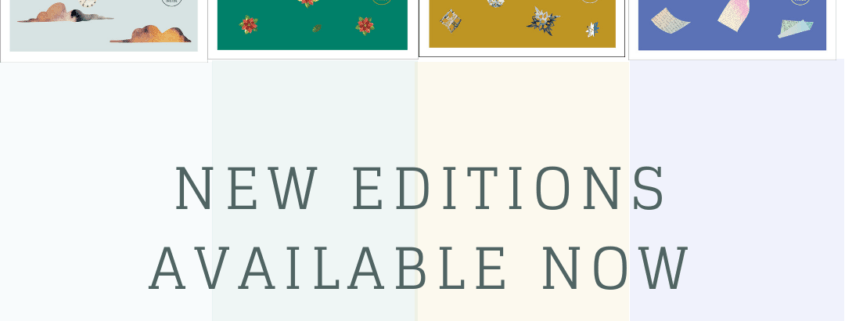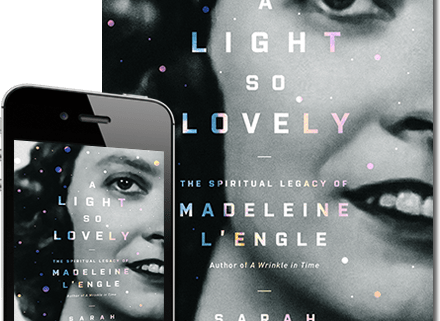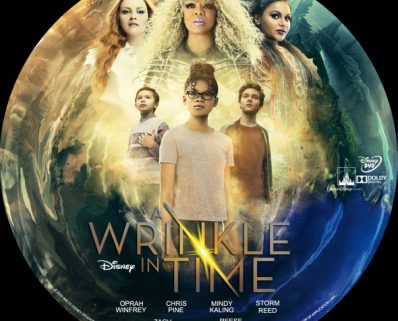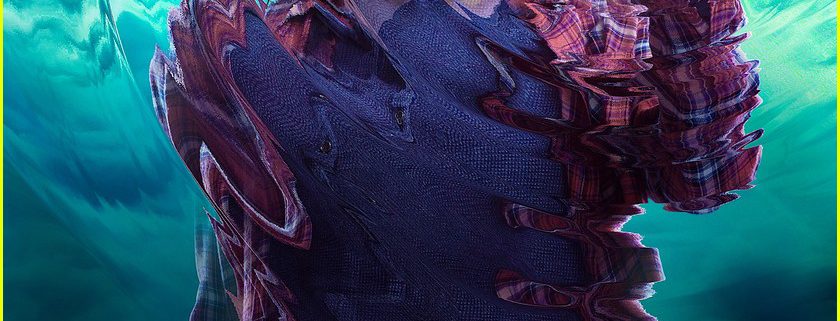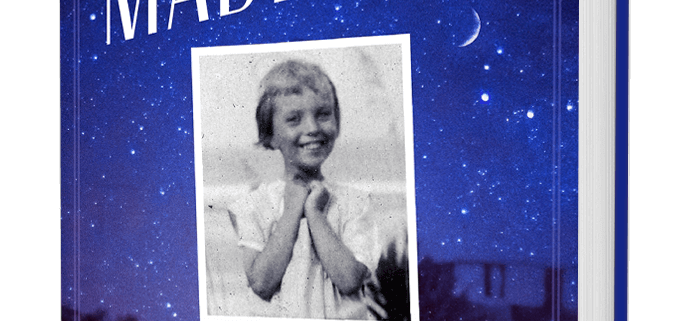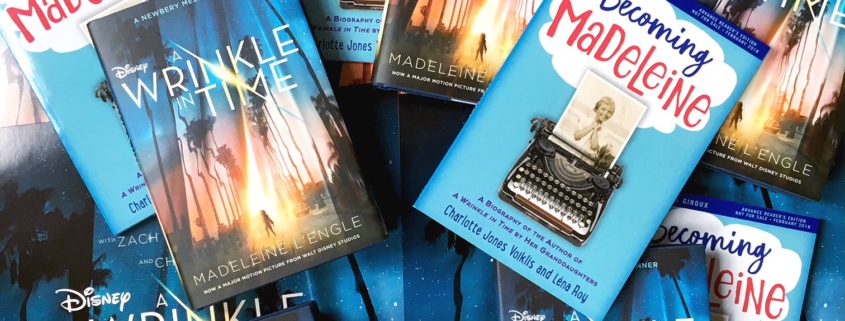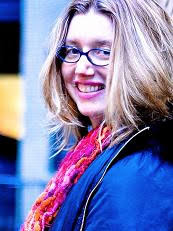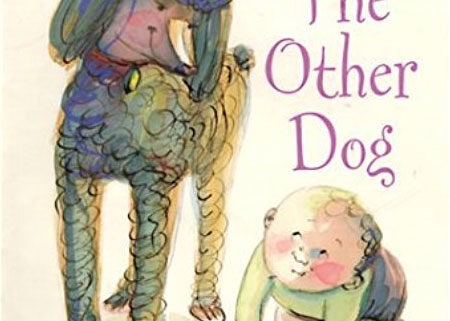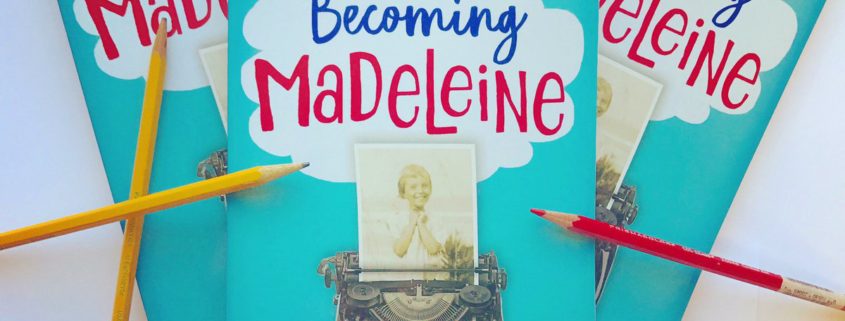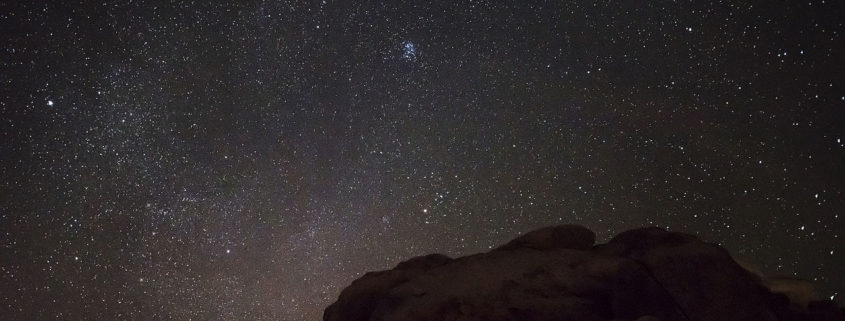My grandmother, Madeleine L’Engle, has always been a source of inspiration for me — from my own writing, to my obsession with the metaphysical, and to my teaching and mentoring. I’d always wanted to tell her story, and had fooled around with different ways of telling it – (at the end of her life I was writing my own version of The Summer of the Great-Grandmother) but I knew I needed my sister Charlotte to help me write it. She didn’t want to, thinking that we were too close to the subject. And perhaps she was right: Gran had become her ethereal self, while here on earth grief and perspective took a long time to settle.
Yet here we are, ten years after her death on September 6th, announcing the cover reveal for our book, Becoming Madeleine. How did that happen?
Two years ago we started thinking about her hundredth birthday, coming up in November of 2018. She LOVED celebrating birthdays. We wanted to give her a big tribute to honor her. But what to do? A grand party? The release of thousands of doves, or balloons? A constellation in the heavens made in her honor?
“Some kind of biography?” I suggested, ever hopeful.
Charlotte hesitated. “Maybe… What about a picture book? It can open with Gan’s first memory of being woken up and taken outside to look at the stars.”
The publisher, though, was interested in a biography aimed at readers who had loved A Wrinkle in Time.
“We can do this,” I whispered. “It should be us.”
“A ‘Madeleine L’Engle was born…’ narrative?” Charlotte asked. “Let someone else write it.”
“Someone else might, at some point! But that doesn’t mean we can’t write one too – and we have such a unique relationship — it will be like a love letter to her.”
I kept whispering. Charlotte kept resisting. She worried that the more scholarly distance required would change our relationship with our grandmother. Besides, the work involved in carefully looking at old letters and journals was daunting. So much material! And while collaborating on a project sounded like fun, there could be pitfalls. “But if not us,” I asked, “who?”
“Okay,” Charlotte said, finally giving in (after listening to “Hamilton” — “who lives, who dies, who tells your story” convinced her where I couldn’t) “Oh! What if we start it at that moment when she was abandoned at boarding school…” I squealed with joy, because once Charlotte commits to something, she’s in it two hundred percent.
I started writing, fictionalizing that moment, imagining dialogue and the young Madeleine’s inner-most thoughts. Charlotte started reading her journals from the 1930’s, and we felt a deeper, more intimate connection with Gran than we had in years. She had been such a large part in helping US become, we felt we could successfully write about her becoming with distance, perspective, and great love.
I stopped fictionalizing, and we both wrote straight, trading back and forth, I writing the first draft of one section, Charlotte editing and then writing the first draft of another. Our voices blended like a running backstitch. We began to read her journals and letters from her girlhood, and I realized why Charlotte had been so daunted. “And this is only from when she was a teenager!” Still, we found moments that added to the narrative and incorporated them into our draft.
We quickly came up with a very rough draft and took it to Margaret Ferguson from FSG who said, “You have a book! But you have work to do.”
Thrilled, we rolled up our sleeves and went back to work, reading her journals and letters up to 1963 when A Wrinkle in Time won the Newbery Award. We were writing the book I had always wanted us to write — one voice together in harmony — we who loved our grandmother fiercely, whose presence made the world a better place, and whose work lives on.
Becoming Madeleine will be published in 2018, the year she would have turned one hundred.
Happy Birthday Gran — we wouldn’t be us without you!
Léna Roy is Regional Manager and instructor at Writopia Lab.

Lena (left) and Charlotte (right. Photo credit: Amy Drucker Photography





